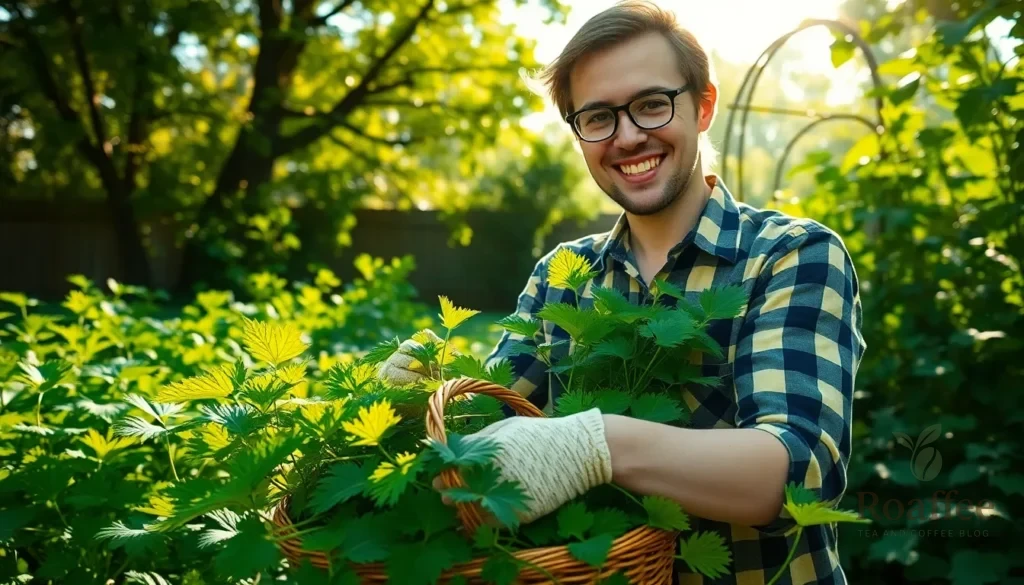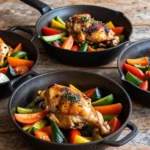We’ve discovered that one of nature’s most underrated treasures grows right in our backyards – the humble stinging nettle. While most people avoid these prickly plants, we’re here to show you how to transform them into a delicious and incredibly nutritious tea that’s been cherished for centuries.
Nettle tea isn’t just another herbal brew; it’s a powerhouse of vitamins, minerals, and antioxidants that can boost your energy and support overall wellness. From medieval monasteries to modern health enthusiasts, people have turned to this earthy, slightly grassy-tasting tea for its remarkable benefits.
We’ll walk you through the simple process of safely harvesting and preparing your own nettle tea at home. Don’t worry – once you dry or cook the leaves, they lose their sting completely! Ready to turn this “weed” into liquid gold? Let’s jump into our foolproof nettle tea recipe that’ll have you sipping your way to better health.
Ingredients
We keep our nettle tea recipe simple with just a few essential ingredients that transform these nutrient-packed leaves into a delicious and healthful beverage. The beauty of this recipe lies in its minimalist approach, allowing the natural earthy flavor of stinging nettles to shine through.
For Fresh Nettle Tea:
- 2 cups fresh stinging nettle leaves (washed and stems removed)
- 4 cups filtered water
- 1 tablespoon honey or maple syrup (optional)
- 1 slice fresh lemon (optional)
For Dried Nettle Tea:
- 2 tablespoons dried nettle leaves
- 4 cups filtered water
- 1 tablespoon honey or maple syrup (optional)
- 1 slice fresh lemon (optional)
Equipment Needed:
- Large pot with lid
- Fine mesh strainer or cheesecloth
- Protective gloves (when handling fresh nettles)
- Long-handled spoon for stirring
Fresh nettles work best when harvested in spring when the leaves are young and tender. We recommend collecting them from areas free of pesticides and pollution for the purest flavor. Dried nettles offer convenience year-round and concentrate the nutrients into a more potent tea blend.
The optional honey adds natural sweetness that complements the grassy notes of nettle tea. Fresh lemon juice brightens the flavor profile and provides additional vitamin C to enhance the already impressive nutritional content of this herbal infusion.
Equipment Needed
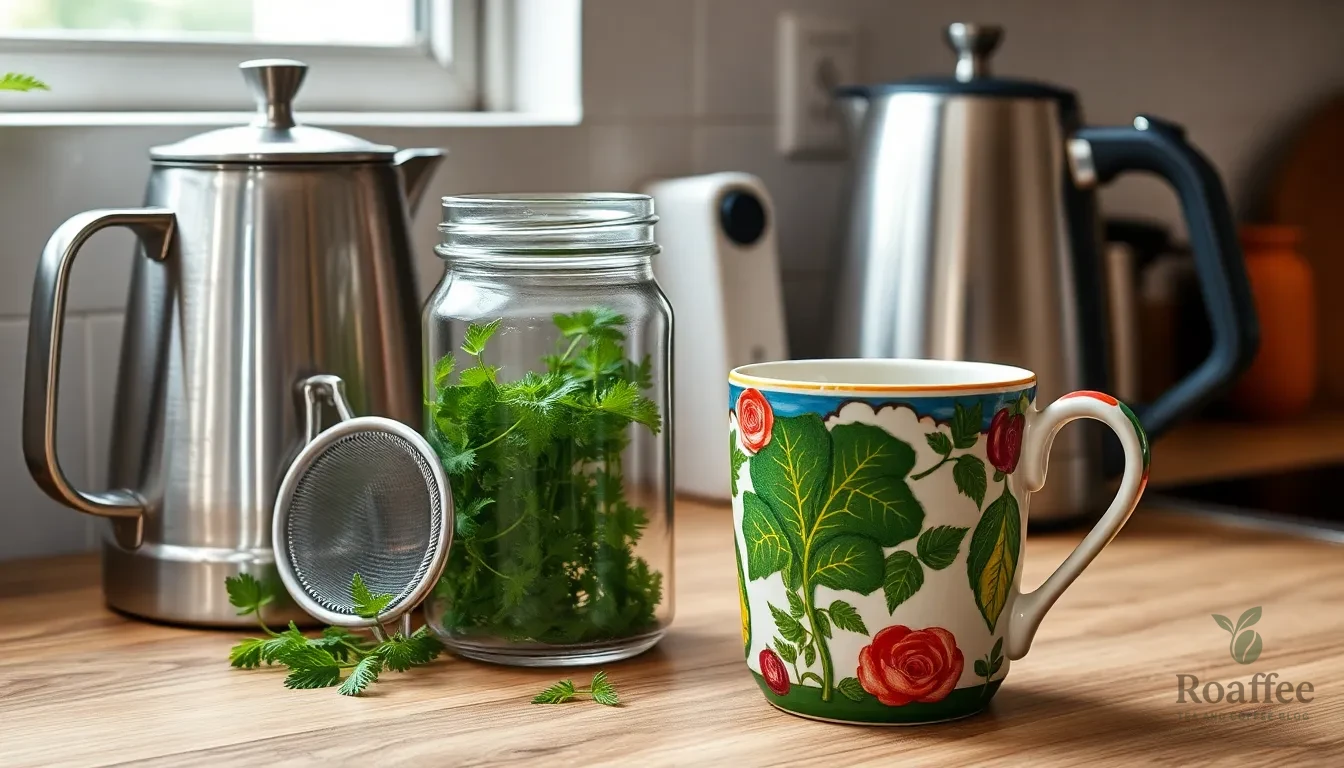
Brewing nettle tea requires only a few basic kitchen tools that most home cooks already have on hand. We’ll walk you through each piece of equipment and explain why it’s essential for creating the perfect cup of nettle tea.
Tea Kettle or Pot serves as our primary heating vessel for boiling water. Any standard kettle or medium-sized pot works perfectly for this purpose. We recommend using a kettle with a whistle feature to alert you when the water reaches the proper temperature.
Glass Jar with Lid becomes crucial for steeping our nettle leaves effectively. Mason jars work exceptionally well for this task because they can handle boiling water and provide an airtight seal. The clear glass allows us to monitor the steeping process and watch as the water transforms into a rich golden tea.
Fine Strainer, Coffee Filter, or Cheesecloth ensures we remove all nettle particles from our finished tea. A fine mesh strainer catches most plant material, while coffee filters provide the smoothest results. Cheesecloth offers the most thorough filtration and works especially well when making larger batches.
Your Favorite Mug completes our setup for serving the finished tea. Choose a mug that holds at least 8 ounces to accommodate a full serving. Ceramic or glass mugs work best as they don’t interfere with the tea’s natural flavors.
| Equipment | Purpose | Alternative Options |
|---|---|---|
| Tea kettle/pot | Boiling water | Electric kettle, stovetop pot |
| Glass jar with lid | Steeping leaves | Teapot, French press |
| Fine strainer | Filtering leaves | Coffee filter, cheesecloth |
| Mug | Serving | Teacup, travel mug |
Optional equipment includes a tea infuser for containing loose leaves during steeping and a wooden spoon for stirring. These tools make the process more convenient but aren’t absolutely necessary for creating delicious nettle tea.
Harvesting and Preparing Fresh Nettles
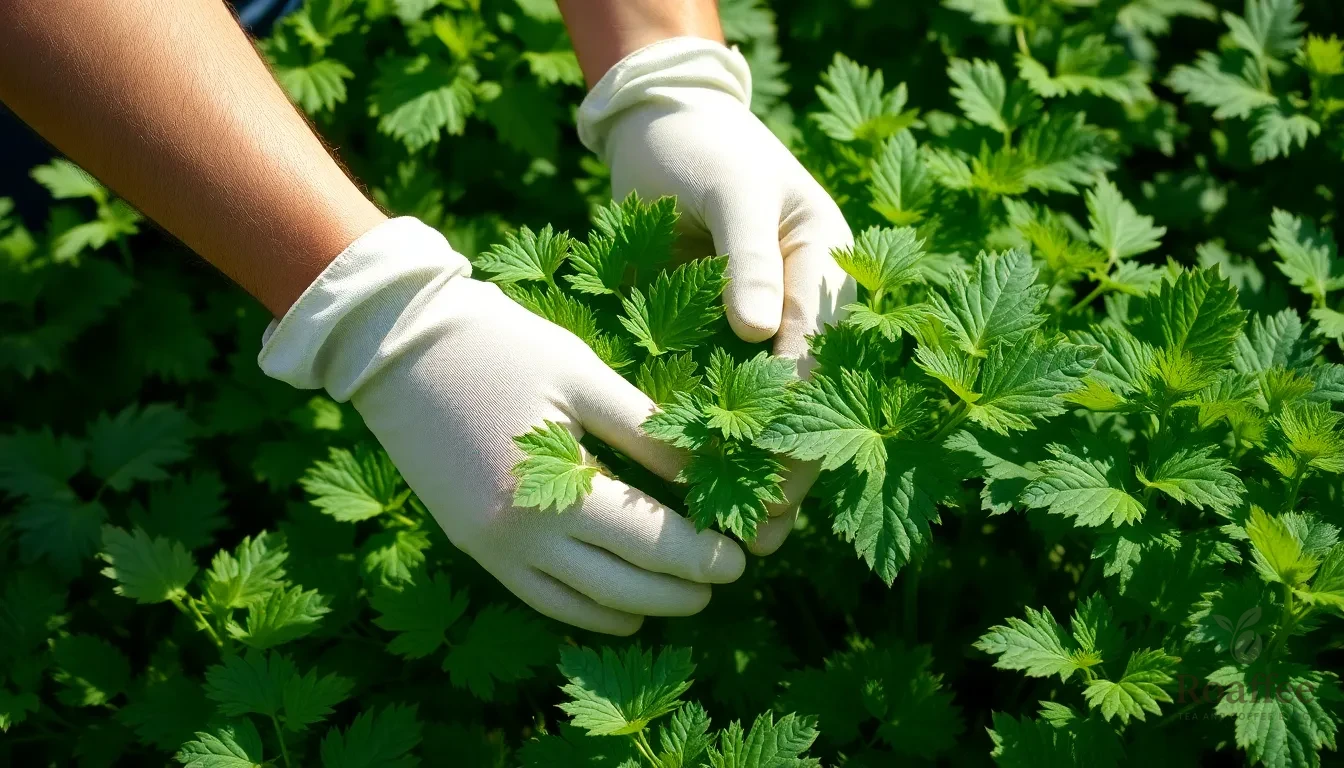
We’ll guide you through the essential steps for safely harvesting and preparing fresh nettles to create the perfect homemade tea. Understanding proper timing and handling techniques ensures you’ll get the most nutritious and flavorful leaves while avoiding unnecessary stings.
When to Harvest Nettles
Late spring to early summer provides the optimal harvesting window when nettle leaves deliver their best taste and lowest bitterness levels. We recommend collecting nettles before the plant flowers to ensure maximum flavor quality and nutritional content.
Target the tender tops and young leaves rather than older growth for superior tea quality. Snip leaves approximately 3 inches above the ground just above new offshoots to encourage regrowth and maintain plant health for future harvests.
How to Safely Handle Fresh Nettles
Protective gloves remain essential when handling fresh nettles due to the tiny stinging hairs covering the leaves. We suggest using tongs as an alternative if gloves aren’t available for your harvesting session.
Place harvested nettles on a clean surface or colander immediately after cutting to allow any insects or small critters to escape naturally. This brief waiting period helps ensure your nettle leaves are completely clean before processing.
Handle dried nettle leaves with equal care since they can still cause skin irritation even after losing their initial sting. We recommend maintaining protective measures throughout the entire preparation process.
Cleaning and Preparing the Leaves
Rinse fresh nettle leaves thoroughly under cold running water to remove dirt and debris accumulated during growth. This cleaning step ensures your tea will be free from unwanted particles and contaminants.
For drying purposes we suggest using paper bags or hanging bundles in a warm location while avoiding direct sunlight that can turn leaves brown or black. Properly dried leaves should snap cleanly when ready for storage or immediate use.
Store dried nettles in airtight containers away from moisture and light to preserve their potency and flavor for future tea brewing sessions. Fresh nettles should be used within a few days of harvesting for optimal taste and nutritional benefits.
Instructions for Fresh Nettle Tea
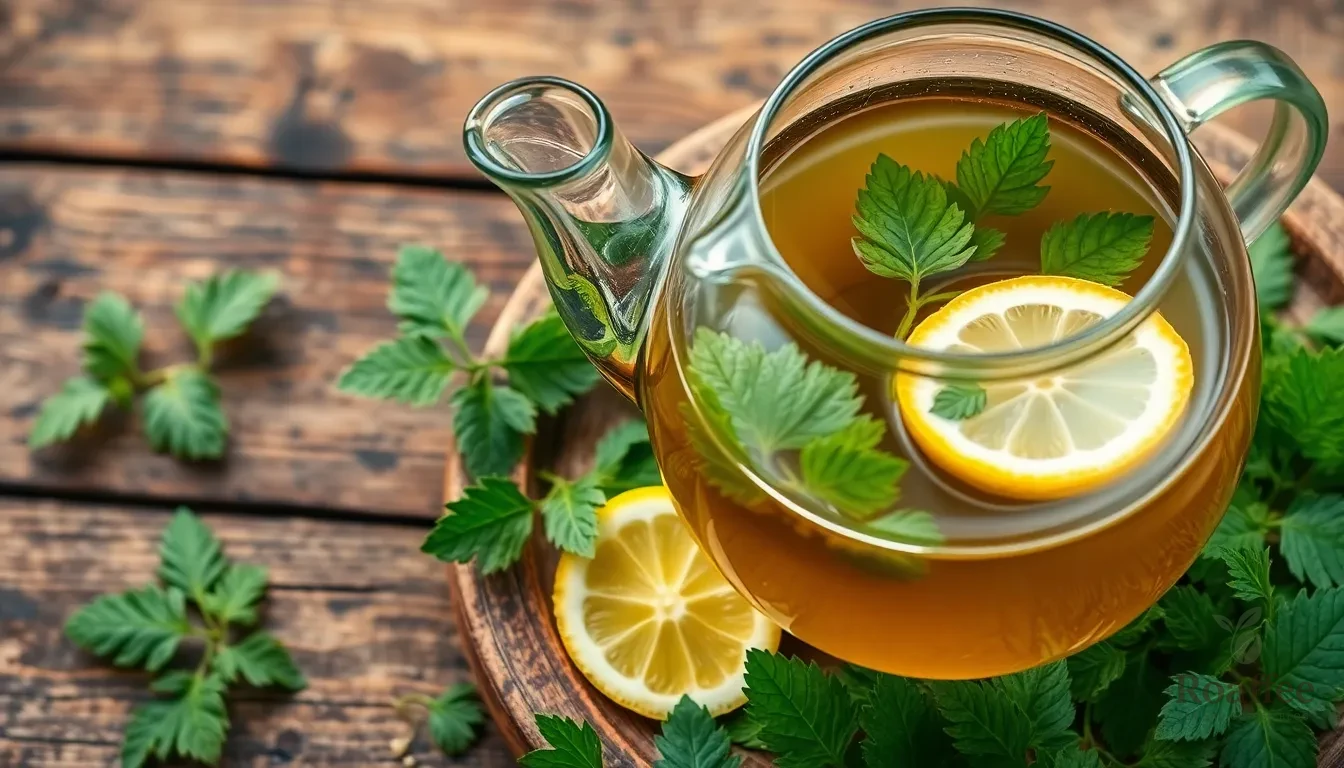
Now that we have our fresh nettles prepared and equipment ready, let’s jump into the two most effective brewing methods. We’ll explore both the traditional boiling method and the gentler steeping technique to help you create the perfect cup.
Boiling Method
We start by bringing 4 cups of filtered water to a rapid boil in our kettle or pot. Once the water reaches a rolling boil, we add our 10-12 fresh nettle leaves or 2-3 short stalks directly to a teapot, glass jar, or French press.
We carefully pour the boiling water over the fresh nettle leaves, ensuring all leaves are fully submerged. The hot water immediately neutralizes the stinging compounds in the nettles, making them safe to consume.
Next, we cover our brewing vessel and allow the tea to steep for at least 10 minutes. For a stronger, more medicinal brew, we can extend the steeping time up to several hours. The longer steeping time increases both the potency and the rich, earthy flavor of our nettle tea.
After steeping, we strain out all the nettle leaves using our fine mesh strainer. We can add honey, maple syrup, or a slice of lemon to enhance the flavor if desired. Our fresh nettle tea is now ready to enjoy hot, or we can cool it down and serve over ice for a refreshing iced version.
Steeping Method
For this gentler approach, we bring our water to a boil and then let it sit for 1-2 minutes to cool slightly to approximately 90-95°C. This temperature preserves more of the delicate nutrients while still extracting the beneficial compounds.
We place our fresh nettle leaves in a teapot or directly in our serving cup. The slightly cooled water helps maintain the tea’s nutritional profile while preventing any bitter notes that can develop from excessive heat.
We pour the hot water over the nettles and cover the vessel immediately to trap the steam and essential oils. This method requires a steeping time of 10-15 minutes for optimal extraction.
After straining the leaves, we can enjoy our nettle tea warm or pour it over ice cubes for a cooling summer drink. This method produces a milder flavor profile while preserving the maximum nutritional benefits of the fresh nettles.
| Brewing Method | Water Temperature | Steeping Time | Flavor Profile |
|---|---|---|---|
| Boiling Method | 100°C (212°F) | 10 minutes to several hours | Strong, earthy, medicinal |
| Steeping Method | 90-95°C (194-203°F) | 10-15 minutes | Mild, smooth, nutrient-rich |
We can freeze any leftover tea in ice cube trays for future use in cold drinks or smoothies, extending the life of our fresh nettle harvest.
Instructions for Dried Nettle Tea

We find dried nettle tea preparation even more convenient than fresh nettle brewing since the leaves are ready to use year-round. The process requires precise measurements and timing to extract maximum nutrients while achieving the perfect flavor balance.
Basic Dried Nettle Tea Method:
Start by measuring 1 tablespoon of dried nettle leaves for every 10 to 16 ounces of water. This ratio ensures optimal strength without overwhelming bitterness. Bring your filtered water to a rapid boil in your tea kettle or pot.
Remove the water from heat immediately after boiling reaches its peak. Add the measured dried nettle leaves directly to the hot water and stir gently to ensure all leaves are properly wetted.
Cover your brewing vessel with a tight-fitting lid to trap essential oils and nutrients. We recommend steeping for 5 to 15 minutes depending on your desired strength preference. Longer steeping times create a more robust earthy flavor and darker color.
Strain the finished tea through a fine mesh strainer to remove all nettle particles. Press the leaves gently with a spoon to extract remaining liquid before discarding them.
Nourishing Overnight Infusion Method:
For maximum nutritional benefits we suggest trying the overnight infusion technique. Measure 30g of dried nettle leaves into a 1-liter glass jar with a secure lid.
Boil 1 liter of water and pour it directly over the nettle leaves in the jar. Stir thoroughly to wet all leaves completely and seal the jar tightly with its lid.
Allow the mixture to infuse for at least 8 hours or overnight at room temperature. This extended steeping time extracts deeper nutrients and creates a more concentrated brew.
Strain the finished infusion through your fine mesh strainer and transfer to a clean container for refrigeration. We recommend consuming this nutrient-dense tea throughout the day for optimal health benefits.
Serving and Storage Tips:
Add honey or your preferred natural sweetener while the tea is still warm for easy dissolution. Serve immediately while hot or allow to cool completely before pouring over ice for a refreshing iced version.
Store any leftover brewed nettle tea in the refrigerator for up to 2-3 days to preserve its medicinal properties. We suggest making fresh batches regularly rather than storing large quantities to maintain peak flavor and nutritional content.
Flavor Variations
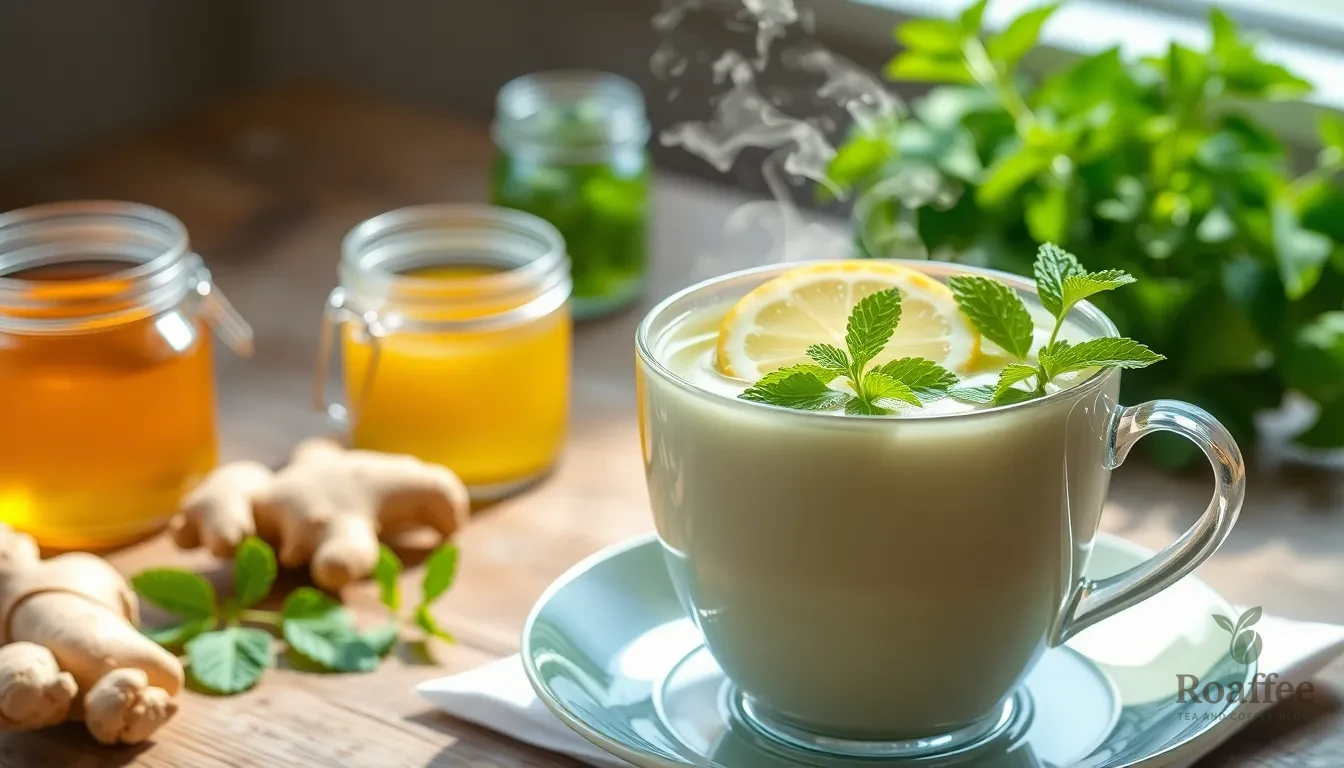
We can easily customize our nettle tea with delicious additions that complement its earthy flavor profile. These variations allow us to create unique blends that suit different tastes and occasions.
Honey and Lemon Nettle Tea
Raw honey transforms nettle tea into a naturally sweet and soothing beverage that balances the herb’s earthy notes. We add 1-2 tablespoons of raw honey to our freshly brewed nettle tea while it’s still warm for optimal mixing. Fresh lemon juice brightens the entire flavor profile and adds vitamin C to boost the tea’s nutritional value.
For a preserved lemon twist, we can substitute fresh lemon juice with small pieces of preserved lemon for a more complex citrus flavor. This combination creates an excellent foundation for iced nettle tea during warmer months. We muddle honey with lemon in a glass filled with ice, pour in our strong nettle tea, and top with sparkling water for a refreshing summer drink.
Mint Nettle Tea Blend
Fresh mint leaves create a cooling contrast to nettle’s robust earthiness when combined during the steeping process. We add 2-3 fresh mint leaves or 1 teaspoon of dried mint to our nettle tea blend before brewing. The mint’s aromatic properties enhance the overall drinking experience while providing additional digestive benefits.
Maple syrup serves as an excellent natural sweetener for this variation, complementing both the mint and nettle flavors without overwhelming them. We can serve this blend hot for a soothing evening tea or prepare it as an iced beverage for afternoon refreshment. The mint nettle combination works particularly well when served cold over ice cubes.
Ginger Nettle Tea
Fresh ginger adds warming spice and anti-inflammatory properties to our nettle tea blend. We slice 2-3 thin pieces of fresh ginger or grate 1 teaspoon of fresh ginger directly into our boiling water along with the nettle leaves. The ginger’s pungent heat creates a perfect balance with nettle’s mild herbal taste.
This variation offers enhanced digestive benefits and provides a warming sensation that makes it ideal for cold weather consumption. We can adjust the ginger amount based on our heat tolerance, starting with smaller amounts and increasing as desired. The ginger nettle combination steeps well using either fresh or dried nettle leaves, and the warming spice helps mask any bitterness from longer steeping times.
Storing Nettle Tea

Proper storage ensures our nettle tea maintains its flavor and nutritional benefits for extended periods. We’ll explore the best methods for preserving both fresh brewed tea and dried nettle leaves.
Fresh Tea Storage
Store freshly brewed nettle tea in a sealed container like a Mason jar in the refrigerator immediately after brewing. We recommend consuming the tea within 2-3 days for optimal flavor and medicinal benefits.
Leftover fresh nettle tea freezes beautifully in ice cube trays for future use in cold drinks or smoothies. This method extends the life of our fresh nettle harvest and provides convenient single-serving portions.
Keep the refrigerated tea covered to prevent absorption of other flavors and maintain its earthy taste profile. Glass containers work best as they don’t retain odors or flavors from previous uses.
Dried Nettle Storage
Store dried nettle leaves in an airtight container away from light, heat, and moisture to preserve their potency and flavor. Properly stored dried nettles maintain their quality for several months.
Choose containers made of glass or food-grade plastic with tight-fitting lids to prevent moisture infiltration. We suggest labeling containers with the harvest or purchase date to track freshness.
Keep dried nettle storage containers in a cool, dark pantry or cupboard where temperatures remain consistent. Avoid storing near the stove or in areas with temperature fluctuations that could compromise the leaves’ integrity.
| Storage Method | Duration | Container Type | Location |
|---|---|---|---|
| Fresh brewed tea | 2-3 days | Mason jar | Refrigerator |
| Frozen tea cubes | 3-6 months | Ice cube trays | Freezer |
| Dried leaves | Several months | Airtight container | Cool, dark pantry |
Health Benefits and Precautions
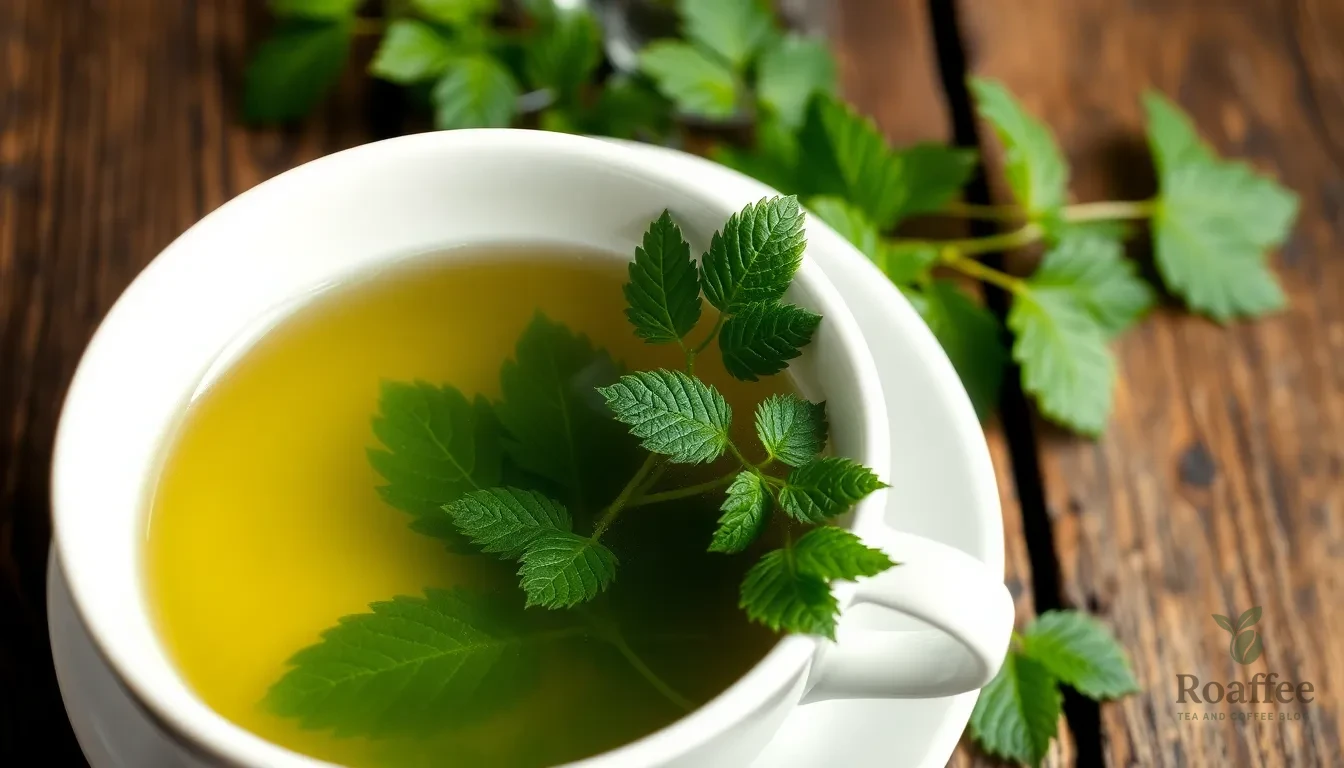
Nettle tea offers remarkable nutritional value that transforms this common garden plant into a powerful health ally. We find that stinging nettles contain an impressive array of antioxidants, vitamins, and minerals that support overall wellness. The tea’s rich nutrient profile may help reduce the risk of infections and chronic diseases, making it a valuable addition to our daily health routine.
Blood pressure management represents one of nettle tea’s most important benefits. Regular consumption may help lower blood pressure naturally, though we recommend monitoring levels closely. The tea also supports diabetes management by improving blood sugar control, which can be particularly beneficial for those managing their glucose levels.
Eye health benefits emerge from the tea’s unique compound composition. The antioxidants present in nettle tea may contribute to better vision and eye protection over time. Anti-inflammatory properties found throughout the plant help reduce inflammation in the body, potentially addressing various health concerns.
| Health Benefit | Effect | Recommended Use |
|---|---|---|
| Blood Pressure | May help lower levels | Monitor regularly |
| Blood Sugar | Improves control | Consult doctor if diabetic |
| Eye Health | Supports vision | Daily consumption |
| Inflammation | Reduces body-wide inflammation | Regular intake |
Important Safety Considerations
Medication interactions require careful attention before incorporating nettle tea into your routine. People taking blood pressure medications should consult their doctor, as nettle may enhance medication effects. Blood sugar medications similarly need professional oversight, since nettle can amplify their impact on glucose levels.
Allergic reactions present a serious concern that we cannot overlook. Some individuals may experience mild to severe reactions, including the potentially life-threatening anaphylaxis. Emergency symptoms include swollen airways, difficulty breathing, rapid heartbeat, and loss of consciousness. We strongly advise seeking immediate emergency help if these symptoms occur.
Healthcare professional consultation becomes essential before adding nettle supplements or tea to your regimen. Medical guidance ensures safe consumption and helps identify potential interactions with existing treatments. We recommend discussing your interest in nettle tea with your healthcare provider, especially if you have underlying health conditions or take regular medications.
Starting with small amounts allows you to assess your body’s response to nettle tea safely. We suggest beginning with a weak brew and gradually increasing strength as tolerated. This approach helps minimize potential adverse reactions while allowing you to enjoy the tea’s benefits.
Conclusion
We’ve shown you how this humble backyard plant can transform into a nutritious and flavorful beverage that’s been cherished for centuries. With just a few simple ingredients and basic equipment you can create your own homemade nettle tea that’s packed with vitamins minerals and antioxidants.
Whether you choose fresh or dried nettles the brewing process is straightforward and rewarding. The flexibility to customize your tea with honey lemon mint or ginger means you’ll never get bored with this healthy drink.
Remember to harvest safely store properly and start with small amounts to gauge your body’s response. We’re confident that once you try this remarkable tea you’ll appreciate why nettle has maintained its reputation as a powerful herbal remedy throughout history.
Frequently Asked Questions
What is nettle tea and why should I try it?
Nettle tea is a nutritious beverage made from stinging nettle leaves that are rich in vitamins, minerals, and antioxidants. Despite the plant’s intimidating sting, the leaves become safe to consume when dried or cooked. This centuries-old remedy offers numerous health benefits including potential blood pressure support, improved blood sugar control, and enhanced eye health.
When is the best time to harvest stinging nettles?
The optimal harvesting time is late spring to early summer when the leaves are young and tender. Focus on collecting the tender tops and young leaves for superior quality and flavor. Always wear protective gloves when handling fresh nettles, and use tongs if gloves aren’t available to avoid getting stung.
What ingredients do I need to make nettle tea?
For fresh nettle tea, you’ll need 2 cups of washed fresh nettle leaves and 4 cups of filtered water. For dried nettle tea, use 2 tablespoons of dried nettle leaves with the same amount of water. Optional additions include honey or maple syrup for sweetness and a slice of lemon for enhanced flavor and nutrition.
What equipment is required to brew nettle tea?
You’ll need basic kitchen equipment including a tea kettle or pot for boiling water, a glass jar with lid for steeping, and a fine strainer to filter out nettle particles. A mug that holds at least 8 ounces is recommended for serving. Optional tools like a tea infuser and wooden spoon can enhance convenience.
How do I prepare fresh nettle tea?
There are two methods: boiling and steeping. For boiling, bring water to a rapid boil, add fresh nettle leaves, and steep for 10+ minutes. For steeping, use slightly cooled water and steep for 10-15 minutes to preserve delicate nutrients. Both methods allow for sweetener additions and can be enjoyed hot or iced.
How long should I steep dried nettle tea?
For basic preparation, steep 1 tablespoon of dried nettle leaves per 10-16 ounces of water for 5-15 minutes. For maximum nutritional benefits, try the overnight infusion method where dried leaves steep in boiling water for at least 8 hours. This creates a more concentrated, nutrient-rich tea.
How should I store nettle tea and dried leaves?
Fresh brewed nettle tea should be stored in a sealed container in the refrigerator and consumed within 2-3 days. Leftover tea can be frozen in ice cube trays for future use. Dried nettle leaves should be kept in airtight containers away from light, heat, and moisture to maintain quality for several months.
What flavor variations can I try with nettle tea?
Popular combinations include honey and lemon for sweetness and nutrition, fresh mint for a refreshing contrast, and ginger for warming spice and digestive benefits. These variations can be prepared hot or iced, allowing you to customize the tea according to your taste preferences and the occasion.
Are there any health precautions I should know about?
Consult healthcare professionals before incorporating nettle tea into your routine, especially if you’re taking blood pressure or blood sugar medications. Some people may experience allergic reactions, so start with small amounts to assess your tolerance. Pregnant women should also seek medical advice before consuming nettle tea regularly.
How often can I drink nettle tea?
While nettle tea is generally safe for most people, it’s best to start with small amounts to gauge your body’s response. Many people enjoy 1-2 cups daily, but individual tolerance varies. If you’re new to nettle tea or have health conditions, consult with a healthcare provider for personalized recommendations.

